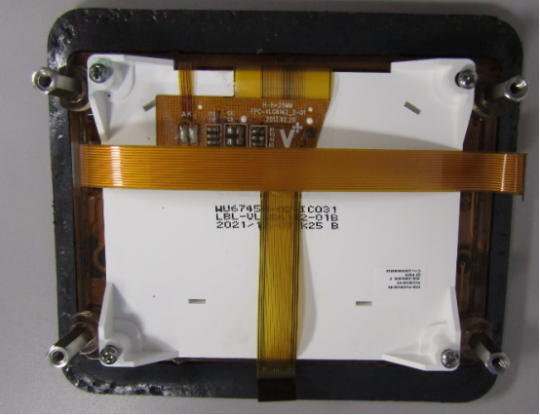#Driver modules
Explore tagged Tumblr posts
Text
Driver modules, cables traditional lamps, high power led grow light
LUXEON Rubix High Power LED Cool White Square 5700 K 440 lm 1.5 A 3.16 V
0 notes
Text
https://www.futureelectronics.com/p/semiconductors--lighting-solutions--lighting-controls/3-2444029-1-te-connectivity-6182895
LED assemblies, lighting controls, LED Drivers, LED Lighting Components
LUMAWISE Motion Sensor, Programmable Circular detection Zone
#TE Connectivity#3-2444029-1#Lighting Solutions#Lighting Controls#assemblies#LED Drivers#LED Lighting Components#Indoor#led driver circuit#driver modules#cables traditional lamps#light control#High Power LEDs#cooper lighting
1 note
·
View note
Text

2 notes
·
View notes
Text
ONLY 3 HOURS AND 3 MINUTES LEFT 😭
#apparently this is the longest day of training because it’s just a bunch of modules and an exam and stuff#but the last two days are actually doing the job so that will go by much faster#it’s not too bad so far! you really just gotta be a safe driver tbh lol#my posts
22 notes
·
View notes
Text
https://www.futureelectronics.com/p/semiconductors--Led-lighting-components--led-driver-modules-rev--constant-current-acdc-led-drivers/ess010w-0500-18-erp-power-3119364
Led driver power supply, LED Dimming Modules, LED driver replacement
100 - 277Vac, 9W, 500mA, 10-18V, [0-10V, TRI...], IP64 LED Driver
#Constant Current AC/DC LED Drivers#ESS010W-0500-18#ERP Power#power supply#LED Dimming Modules#LED driver replacement#circuit#high power led driver#high voltage#components#driver replacement#LED driver circuit board
3 notes
·
View notes
Text
https://www.futureelectronics.com/p/semiconductors--Led-lighting-components--led-driver-modules-rev--constant-current-acdc-led-drivers/hlg-320h-24a-mean-well-1161990
LED Lighting Components, LEDs lights, led light, led module, outdoor led lighting
100 - 277Vac, 320.16W, 13340mA, 12-24V, [Potentiome...], IP65 LED Driver
#LED Driver Modules#Constant Current AC/DC LED Drivers#HLG-320H-24A#MEAN WELL#LED Lighting Components#module#outdoor led lighting#system#led transformer#AC/DC LED Drivers#Led house light#constant voltage#dimmer#circuit#led home lighting
2 notes
·
View notes
Text
https://www.futureelectronics.com/p/semiconductors--Led-lighting-components--led-driver-modules-rev--constant-current-acdc-led-drivers/ledinta0700c210do-signify-north-america-6130148
LED Driver Modules, LED Lighting controls, Dimmable LED driver circuit
100 - 277Vac, 150W, 700mA, 60-210V, [0-10V], IP66 LED Driver
#Constant Current AC/DC LED Drivers#LEDINTA0700C210DO#Signify North America#LED Lighting Components#Power Tool Accessories#high current#Linear#Replacement#chips#LED arrays#board#Modules#controls#Dimmable LED driver circuit
2 notes
·
View notes
Note
pls summarize sleeping with the enemy for us
abused wife of a rich psychopath escapes him by faking her death in a sailing accident and tries to start a new life in a small town under a new identity but he figures out she's not really dead and comes after her. early 90s melodramatic thriller that veers into camp where the husband is concerned but is otherwise way better than it feels like it should be, i love the score and the look and it's probably my fave julia roberts movie or at the very least in my top tier. i've rewatched it a buuunch of times because as cheesy as it can be, watching her find her strength always gets me! i think part of my affection for it also stems from the fact that it sits squarely in the overlap between my taste in movies and my mom's taste in movies.
and on top of all that, at one point julia disguises herself in full dirtbag boy drag with a wig and mustache when it's...not entirely called for? which i am of course obsessed with

#she could have worn literally any disguise but was like no i need to live my king of the hill side character fantasy. pass the spirit gum#and no i will not even try to modulate my voice when talking to people#what? you've never seen a beautiful willowy delicate featured doe eyed truck driver with the voice of an angel before??#p
2 notes
·
View notes
Text
Understanding LCD Display Technology in Industrial and Commercial Applications
In today's digital and automated world, LCD display technology plays a pivotal role across various sectors—from consumer electronics to industrial automation. Whether you're designing a human-machine interface (HMI), upgrading factory control systems, or developing smart devices, selecting the right LCD panel or TFT LCD module is essential for performance and reliability.
A LCD display module typically includes not only the LCD panel but also the necessary driver electronics, backlight units, and often a touch interface. These modules offer a plug-and-play solution, reducing development time and improving integration efficiency.
Manufacturers frequently rely on TFT LCD modules (Thin-Film Transistor) for their high-resolution output, excellent color reproduction, and wide viewing angles. These modules are ideal for environments that demand real-time data visualization, such as production lines, diagnostic equipment, and control panels.
Advantages of LCD Display Screens in Industry
1.Durability & Longevity: Industrial LCD display screens are built to withstand harsh conditions like high temperatures, humidity, and electromagnetic interference.
2.Versatility: From compact 2.4-inch panels to large-format 21.5-inch displays, there's an LCD display screen suited for every application.
3.Touch Capability: Many panel displays now feature resistive or capacitive touch screen integration, offering intuitive user interaction.
4.Energy Efficiency: Compared to other display technologies, LCDs consume less power��making them ideal for battery-powered or energy-conscious systems.
Applications of LCD Display Panels
1.Factory Automation: LCD display panels are at the heart of HMI terminals, allowing operators to monitor and adjust machinery in real time.
2.Medical Equipment: Accurate and high-resolution screen displays are critical in diagnostics and monitoring systems.
3.Transportation: LCDs are widely used in dashboards, GPS systems, and ticketing kiosks.
4.Retail & POS: Interactive TFT LCD modules are commonly seen in self-checkout systems, ATMs, and digital signage.
Shenzhen Zhiyan Optronics Co., Ltd. (zylcdshop.com) is a trusted and seasoned provider of premium-quality LCD screens. As one of the leading LCD screen suppliers in China, we are committed to offering competitive pricing.

#touch screen#lcd driver board#display module#touch display#touch lcd screen#LCD Module Display#Lcd touch#TFT LCD display#tft lcd display module#lcd module old#inch lcd screen#oled panel#tft lcd screen#tft lcd module#lcddisplays#lcd tft#lcd display modules#lcd display screen
0 notes
Text
Introduction to LED Display Driver ICs for the New Year
When it comes to LED displays, most people focus on resolution, brightness, and color performance. However, there’s a critical component behind the scenes that directly determines all of these — the driver IC. Whether you’re working with outdoor advertising screens, indoor conference displays, or large stage video walls, the driver IC plays a central role in achieving high performance. It affects…
0 notes
Text
Open source 24-channel USB high-voltage driver
When it comes to automation and control systems, there's often a need for multiple digitally controlled output terminals with high-voltage handling capabilities. Many existing modules are bulky, expensive, or require numerous additional components to function. To address this gap, I've developed a fully open-source, USB-controlled 24-channel high-voltage driver. This device provides precise, flexible control in a compact and user-friendly package. The project is open hardware, released under the CERN-OHL-W license, ensuring transparency from hardware schematics to firmware code. The driver module communicates via USB using a simple virtual COM port, eliminating the need for special drivers and complex setups.

At the core of the system are three TPIC6B595 shift registers, each supplying eight open-drain outputs that can handle up to 50V and sink currents of up to 150mA per channel. These registers are daisy-chained to achieve a total of 24 outputs. The outputs are designed for low-side switching and include integrated clamping diodes, making them suitable for driving inductive loads such as relays and solenoids. Data is clocked into the registers through serial input from a microcontroller, allowing for fast and reliable state updates across all channels with just a few lines of code.
The logic and communication for this module are managed by the STC15W204S microcontroller, a cost-effective yet powerful 8051-based MCU with enhanced UART performance and an integrated oscillator. This chip is paired with a CH340N USB-to-UART bridge, which presents the device as a standard virtual COM port to the host PC. Upon connection, the microcontroller listens for a set of AT-style commands sent over the serial connection. These commands are straightforward and user-friendly, for example, "ON=65280" activates the middle 8 outputs, "CLR" turns off all channels, and "VER" retrieves the firmware version. Additionally, there is a command to save the current output state to the built-in EEPROM, enabling the system to restore its output to a known state after power cycles. This interface design is perfect for scripting, automation, or integration with software tools such as Python, LabVIEW, or custom control GUIs.
The PCB is designed using KiCad and features a 2-layer layout measuring 75.25mm × 33.75mm. It includes 2.54mm pitch headers for output connections and is equipped with a USB Type-C connector. Power can be supplied through either USB or an external regulated 5V source, which can be selected via onboard jumper settings. The layout ensures clean signal routing and minimizes crosstalk or interference, even when switching high-voltage loads. Careful decoupling and protection components provide robustness for real-world applications.

The PCB for this module was fabricated by PCBWay, who generously sponsored this project. PCBWay offers high-quality PCB manufacturing and assembling services. Also, they offer CNC and 3D printing services. The PCB of this module is available to order from PCBWay. Check out the PCBWay website for its manufacturing capabilities and pricing.
The firmware for the STC15W204S is written in C using SDCC. It is easy to expand the command set, introduce new communication modes, or add timed control logic as needed. The current implementation allows full 24-bit output control using a base 10 numerical mask, making it both scriptable and human-readable. Thanks to the preloaded bootloader of the STC15W204S, firmware updates can be performed through the same serial interface. Details about this process are covered in the project documentation. Like the hardware, the firmware is released under the MIT License and is available in the project repository.
The system has been tested with a variety of 12V and 24V inductive and resistive loads, including relay banks, solenoids, and LED arrays. Since the outputs are open-drain, external voltages up to 50V can be safely switched on each channel making it ideal for a range of industrial, laboratory, or artistic applications. Output timing is reliable, with clean edge transitions observed during scope testing, and no signal integrity issues even during full 24-channel toggling. It is recommended to use individual heatsinks for the driver ICs when driving high-current inductive loads with this module. While the printed circuit board has heat transfer traces, the addition of individual heatsinks can increase the durability of the module.

Potential use cases for this module include automated test benches, home automation systems, signal routing for instrumentation, nixie tube multiplexing, and other high-voltage control tasks. The command-based protocol makes it easy to script operations or integrate this module into a larger system.
For those who wish to explore the schematics, command protocol, design rationale, and usage examples in greater depth, I have published comprehensive documentation and resources in the project wiki. This includes detailed assembly instructions, firmware flashing guidance, and tips on customizing the firmware for enhanced functionality.
All source files - including schematics, PCB layout, firmware code, and the bill of materials - are freely available at https://github.com/dilshan/24ch-usb-high-voltage-driver.
0 notes
Text
Vehicle Recall: International HV, HX, LT, MV & RH Commercial Trucks:
#25V276000#assistive device failure hazard#component detachment hazard#crash hazard#driver visibility#injury hazard#International Harvester Company#International Motors#Laceration hazard#Navistar#Navistar International Corporation#NHTSA#NHTSA Campaign Number: 25V276000#Recalls Direct RIN: 19654-2025#Right-Side Wiper Arm#US National Highway Traffic Safety Administration ("NHTSA")#Visibility impairment hazard#windshield wiper failure#Wiper Module
0 notes
Text
https://www.statsmarketresearch.com/global-automotive-led-driver-module-forecast-2025-2032-931-8033003
0 notes
Text
Mosfet constant current led driver, LED Driver Modules, AC-DC LED driver convert
100 - 277Vac, 29.4W, 350 - 700mA, 28-42V, [0-10V, TRI...], IP20 LED Driver
0 notes
Text
The research insight on taste modulators industry highlights the prominent players in the market. Get known & unknown adjacencies impacting the market for taste modulators.
#Taste Modulators Market#Taste Modulators#Taste Modulators Market Size#Taste Modulators Market Share#Taste Modulators Market Growth#Taste Modulators Market Trends#Taste Modulators Market Forecast#Taste Modulators Market Analysis#Taste Modulators Market Report#Taste Modulators Market Scope#Taste Modulators Market Overview#Taste Modulators Market Outlook#Taste Modulators Market Drivers#Taste Modulators Industry#Taste Modulators Companies
0 notes
Text
Writing Character Device Driver
Writing Character Device Driver - A Linux character device driver allows user programs to interact with hardware devices by reading or writing data one character at a time. Developing such drivers requires understanding the Linux kernel's structure, APIs, and coding practices.

Linux Kernel APIs and Key Concepts
The kernel provides APIs like register_chrdev() and alloc_chrdev_region() for registering character devices. Each device is identified by major and minor numbers, enabling the kernel to associate device files with their respective drivers.
File Operations and Device Registration
Drivers implement a set of file operations (struct file_operations) to define how the kernel handles user interactions, such as opening, reading, and writing the device. Properly registering the device using functions like cdev_add() ensures integration with the kernel.
Challenges in Development
Writing device drivers involves challenges like managing hardware-specific quirks, maintaining thread safety, and ensuring synchronization using mechanisms like mutexes, spinlocks, and semaphores. Compatibility across kernel versions and varying hardware specifications adds complexity.
Coding Standards and Security
Linux emphasizes clean, maintainable code. Following the kernel coding style and using the required headers ensures compliance. Security practices, such as validating user inputs and minimizing kernel attack surfaces, are critical in driver development.
Testing and Documentation
Thorough testing with tools like kmod and insmod is crucial. Developers must document interfaces, supported hardware, and usage instructions to aid users and maintainers.
Future Trends
With advancements in hardware, Linux device drivers will increasingly focus on improved modularity, real-time performance, and compatibility with modern interfaces like PCIe and USB 4.0.
By adhering to Linux's guidelines and practices, developers can create robust character device drivers that meet the needs of modern systems.
Linux character device driver development,Kernel modules,Device driver coding,Major and minor numbers Linux,File operations structure,Device registration in Linux,Hardware specifications for drivers,Linux kernel compatibility,Driver synchronization mechanisms,Error handling in drivers.
#Linux character device driver development#Kernel modules#Device driver coding#Major and minor numbers Linux#File operations structure#Device registration in Linux#Hardware specifications for drivers#Linux kernel compatibility#Driver synchronization mechanisms#Error handling in drivers
0 notes